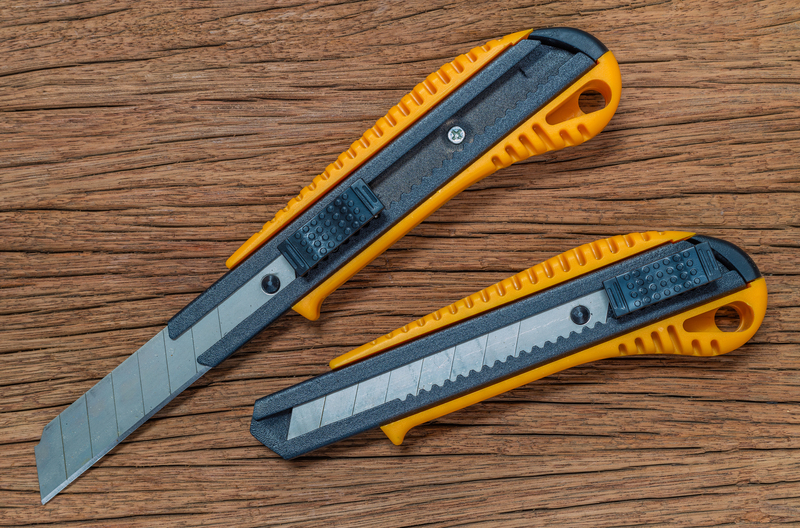Elevate Your Lifting Skills with Kinetic Movement Principles
Are you looking to improve your lifting performance and maximize your training results? The secret to unlocking your true potential may lie in integrating kinetic movement principles into your regimen. Whether you're a beginner or an experienced lifter, understanding and applying these scientific concepts can shift your approach, reduce risk of injury, and help you elevate your lifting skills to new heights. This comprehensive guide explores how kinetic movement can transform your lifting sessions and move you closer to your fitness goals.
Understanding Kinetic Movement Principles
To invest in smarter training, it's crucial to grasp what kinetic movement principles are. Kinetic movement refers to the forces and the resulting movements that occur within the body during any physical activity--especially lifting. These principles stem from the science of kinesiology and biomechanics and involve concepts such as force, leverage, momentum, and alignment.
What Are Kinetic Movement Principles?
- Force Production and Control: Generating optimal force with the right muscle groups at the right time.
- Stability and Mobility: Balancing the need for stable joints with the flexibility required for effective movement.
- Energy Transfer: Efficiently transferring energy from one part of the body to another for maximal lift power.
- Mechanical Leverage: Understanding body positioning to maximize efficiency and minimize strain.
- Movement Patterns: Training your body to move in coordinated, natural patterns for safety and strength.
By mastering these principles, you can dramatically improve your lifting technique, leading to better performance and reduced injury risk.

Why Kinetic Principles Matter in Strength Training
Kinetic movement isn't just for athletes or professional lifters--it's fundamental for anyone who lifts weights. Applying these principles can:
- Improve your performance by optimizing force application and movement efficiency.
- Reduce injury risk by promoting proper technique and alignment.
- Enhance muscle engagement for more balanced development.
- Accelerate skill progression by correcting faulty patterns early on.
Science demonstrates that improper mechanics are a leading cause of lifting injuries and performance plateaus. Integrating kinetic principles into your training is an investment in your longevity and progress.
Kinetic Movement Fundamentals: The Building Blocks
1. Mastering Proper Alignment
Proper alignment is the foundation for safe and effective lifting. The correct stacking of joints--such as ankles, knees, hips, and shoulders--ensures that forces travel through your body efficiently, rather than causing damaging shear stress.
- Check your posture before every lift
- Maintain a neutral spine by bracing your core
- Align your head over your shoulders, and hips over your feet
2. Building Strong Movement Patterns
Focusing on movement quality, rather than simply moving heavy weights, is vital. Compound movements like squats, deadlifts, and presses offer the most return when performed with precise, fluid patterns.
- Practice hip hinging before pulling movements
- Use controlled eccentrics (lowering phase) to teach your muscles proper tempo
- Incorporate unilateral movements to address imbalances
3. Understanding Energy Transfer
Your body is a kinetic chain. When lifting, energy must flow seamlessly from the ground upward for optimal performance. Interruptions or "energy leaks" diminish your lift and expose you to injury.
- Engage the entire kinetic chain, from feet to fingertips
- "Root" your feet and use them as a power base
- Use bracing and timing to transfer force
Elevating Your Lifting Skills with Kinetic Movement
Developing Mental Awareness
Skillful lifters possess a strong mind-muscle connection. Tuning into the sensations of your body (proprioception) as you move is the first step in refining your form and technique.
- Perform warm-up sets with intention, focusing on muscle engagement
- Pay attention to sticking points and fatigue during sets
- Film your lifts for self-assessment and feedback
Using Functional Warm-Ups
Dynamic warm-ups prime your kinetic chain. Prior to lifting, use exercises that target mobility, stability, and muscle activation.
- Incorporate banded walks, hip openers, and thoracic mobility drills
- Progress from general to specific, finishing with light sets of your main lift
Technical Application: Key Kinetic Movement Principles for Popular Lifts
Squats
- Maintain tripod foot contact (heel, big toe, little toe)
- Screw your feet into the floor to generate torque
- Initiate the movement with hips while keeping a tall chest
- Drive up through the middle of your foot
Deadlifts
- Set hips and shoulders in line before pulling
- Generate tension in the hamstrings and lats before lift-off
- Keep the bar close to your legs throughout the motion
- Lockout with glute engagement, not low back hyperextension
Bench Press
- Drive your shoulder blades into the bench for stability
- Plant feet firmly and use leg drive for total-body tension
- Lower the bar under control, keeping elbows at 45 degrees
- Press with forceful extension, maintaining full-body tightness
Common Errors That Limit Lifting Progress
Even dedicated lifters fall prey to certain technical pitfalls. Here are some mistakes that can prevent you from maximizing kinetic movement:
- Rounded spine in deadlifts or squats--causing energy leaks and injury risk
- Valgus knees (knees caving in) during squats--reducing force production and stressing joints
- Poor bracing and core engagement--lowering power output and stability
- Overly arched back in bench or overhead presses--leading to shoulder strain
- Lifting with only "mirror muscles" and neglecting posterior chain
Correcting these errors not only safeguards your body but also unlocks hidden strength and efficiency.
How to Progress and Keep Elevating Your Lifting Skills
Track and Analyze Your Performance
Data-driven training is essential for growth. Consistently record your lifts, note how you feel, and observe your form with video or feedback from a coach.
- Set SMART goals (Specific, Measurable, Achievable, Relevant, Time-based)
- Use a training diary or app to track weight, reps, and notes on form
Integrate Mobility and Stability Drills
Strong lifts depend on healthy, functional joints.
- Commit to a mobility practice for hips, shoulders, and ankles
- Perform stability drills like single-leg Romanian deadlifts or Turkish get-ups
Practice Intentional Variations
Once you've achieved competence in basic lifts, layer in variations that challenge coordination and kinetic awareness:
- Try tempo squats, paused deadlifts, or close-grip bench press
- Use unilateral movements (e.g. single-arm row) to fix imbalances
- Alternate grip and stance widths
Emphasize Recovery and Adaptation
Elevation of your lifting skills happens with proper recovery--where the body repairs and adapts. Listen to your body and rotate intensity to prevent overuse injuries.
- Get adequate sleep and nutrition
- Employ active recovery like walking, stretching, or yoga
- Monitor signs of overreaching, such as stalled progress or lingering soreness
The Role of Professional Guidance in Developing Kinetic Lifting Skills
While self-education is crucial, working with a knowledgeable coach or experienced lifter can accelerate your mastery of kinetic movement principles. They provide:
- Immediate feedback on form and technique
- Custom programs that address your weaknesses
- Advanced drills for coordination and power development
Don't underestimate the value of a professional "eye"--even one or two sessions can offer breakthroughs in your technique and confidence.

Unlocking Athletic Potential: The Benefits of Kinetic-Based Lifting
Transferring focus from just lifting heavier to mastering movement has numerous benefits, regardless of your training goals.
- Optimized muscular development: Better muscle activation across kinetic chains
- Strength that translates: Improved function in sports, daily life, and injury prevention
- Long-term progress: By solidifying your foundation, you set the stage for years of safe gains
- Mental resilience: Technical training fosters patience, discipline, and focus
When you elevate your lifting skills using kinetic movement, you're not just training muscles--you're training movement as a whole.
Conclusion: Bring Science-Backed Principles Into Every Lift
Whether your aim is personal bests, muscle gain, improved health, or enhanced athleticism, elevating your lifting skills with kinetic movement principles is the key to sustainable and meaningful progress. Science underscores the fact that movement quality trumps all. By committing to kinetic awareness, smart drilling, and progressive overload, you'll not only set new records in the gym but create a strong, functional, injury-proof physique for life.
Start today by reassessing your form, incorporating mobility, and applying the principles of kinetic efficiency in every set and rep. Elevate your lifting performance--one intentional movement at a time!



